This essay from Chaplain (Colonel) Timothy S. Mallard (U.S. Army) first appeared in our print edition. For a PDF of the essay, click here. To receive early access of the next print edition and your own physical copy of Providence, click here.
Since my commissioning in 1988 as a United States Army Chaplain Candidate, the fundamental purpose of war has changed relatively little: war generally remains a contest of wills to achieve political ends between nation-states employing military force. Clausewitz’ famous dictum still holds true that “War is not merely a political act, but also a real political instrument, a continuation of political commerce, a carrying out of the same by other means.”[i]
However, war inherently seems different today, does it not? How so? What has changed, and what endures as America enters the 21st Century still prosecuting the longest, most intractable war in its history? I make no pretense to have the complete answers to such broad questions, yet they are important to the profession of arms, the nation, and, I contend, the world as well, so sketching them is a type of sacred duty. As part of my calling now as an Army chaplain with over 27 years’ service, I trust I’ve gained a broad enough professional understanding to undertake the task. The son of a career Army chaplain, I have served at and through the attack on the Pentagon, deployed to combat multiple times, and most importantly have pastorally walked with warriors and their families through the suffering of a war where religion and religious issues inform combat. As a result, I probably have as great a currency with these questions as does anyone. Still, these musings are mine alone—certainly not those of the U.S. Army Chief of Chaplains, the U.S. Army, or the Department of Defense—and I can only offer them as limited considerations designed to stimulate professional reflection and discussion. Yet, in this sense, one might consider this article a verbal call to arms to appreciate anew the enduring yet changing nature of contemporary war.
That said, from my service in the profession of arms, there are four truths which the Global War on Terror has both elevated and affirmed: war is catastrophic to individuals and families and corrosive to military formations; values remain decisive in shaping a nation’s decision to go to war and its prosecution of the same; religion is and will remain a catalyst in geopolitical decision-making, particularly the formation of grand strategy, conflict termination, and reconciliation; and finally, the context of war is shifting, with nation-states enduring as stabilizing forces in the global order and sub-state actors exercising increasing influence, but with the potential of war in cyberspace to produce complex catastrophes incorporating lethal effects in diplomatic, informational, military, and economic spheres (including energy, healthcare, and transportation networks). I have explored these questions in greater detail in my own doctoral research but shall simply detail them here and see if they might point the way to a deeper understanding of war as a social phenomenon and, more importantly, how like-minded Christian spiritual leaders might responsibly direct war’s conduct in the future.
Of the four truisms I’ve outlined, we cannot escape the enduring reality that war remains catastrophic to warriors and their families and corrosive to military formations. While this observation might seem naively self-evident, in a culture which often inchoately desires technology to sanitize the messiness of reality war, reminds us such an effort is illusory. Combat trauma, post-traumatic stress, and the moral and spiritual injury in personnel wound not only warriors but also the loved ones around them.[ii]
I have been particularly informed in this regard by the enduring ministries of my colleagues in the Army Chaplain Corps who daily attempt to help both those warriors and their families integrate such suffering into personal and family system identities. A genuine theological reality of this pastoral service has been, I think, a renewed understanding, from at least the Christian tradition, that suffering is not an end unto itself but a means to an end of renewing a living hope. Suffering thus becomes a valuable experience of living both immanently and transcendently in, by, and through the God who is both with us and beyond us, and ironically becomes an antidote to the pervasive idolatry of the self on which contemporary American society is so fixated. Such a living hope—founded and exercised in Jesus Christ—thus transforms our suffering from a barrier to be overcome to a path to be walked.[iii]
However, it further remains true that such suffering affects not only warriors and families but also the societies which employ them and, by extension, the world at large. Thus, the suffering of war takes on a multi-dimensional character: it is individual, familial, communal, national, and even global in its nature and effects. The image which reminds me of this is that though all warriors leave the battlefield, the battlefield never leaves them. The weight of carrying such a burden is concentric to society and is a life-long project. This war on terror has reminded those of us in the American context of this reality.
However, and perhaps related to this, this war also subtly corrodes the military formations and institutions which provide citizens their security. As Mark Mattox reminds us, war on a protracted scale diminishes the moral fiber of warriors and, to the extent that those same warriors become leaders in their formations, also diminishes the moral fiber of the units in their charge.[iv] For a modern constitutional democracy in which the military forces of the state are an ever-growing cohort of skilled professionals charged with the “management of violence,” to quote Samuel Huntington, this corrosive effect of prolonged war thus has immense implications for the Republic.[v]
Even those military formations with the most cherished histories and deeply held values are increasingly at risk in bello for, at best, a drift into the hazy shadows of ill-considered moral acts and, at worst, the outright commission of atrocities and war crimes.[vi] For those same forces post bello, the collective effects of moral corrosion manifest in malformed personal behavior, arrested leader moral development (and perhaps psycho-social development), the legitimate need to confront war crimes (if committed), the re-establishment of the rule of law through justice and reconciliation, and necessary social healing through exercises of memory, repentance, and forgiveness.[vii] While such acts of contrition have occurred in this war at some points on a local scale, the process of collectively addressing moral corrosion for units, the Army, or the nation has been distinctly absent.
I am not arguing that America or its Army needs to be placed on trial for specific war crimes; such a generalization does not hold up to considered ethical analysis from perspectives such as the Just War Tradition, the tradition in which I am trained and admittedly operate in the profession of arms. Rather, what I am advocating is that in the best tradition of American civil-military relations, we as a nation need to rediscover links to an increasingly professionalized and, to be candid, distant set of military forces operating for the nation but at the margins of its collective social understanding.
If such forces are experiencing moral corrosion as I’ve described, then strengthening the links between the American military and its people is not just a nice perk to be casually pursued; rather it is vital to the life and future of the nation. A helpful start to this process would be to intentionally address at a force-wide level the need for healing and reconciliation within our armed forces and only then to effect renewed training in moral formation as a part of leader development -to put the horse back before the cart rather than just leaving the horse behind and hoping the cart will roll along on its own.
This conclusion leads to my next observation that values and identity remain decisive in shaping a nation’s decision to go to war and its prosecution of conflict. In essence, these two concepts for any nation are inextricably linked. Despite the post-modern ethos of self-defining meaning and truth, when a nation-state considers whether to go to war, then at least part of its decision is based on an assessment of its collective values, particularly as those values relate to or are an outgrowth of its historical ideals.
For instance, one cannot understand how France approaches contemporary security challenges and decisions about war without understanding its almost sacrosanct desire for peace and how that value still retains strong ties to the nation’s experience in World War I, perhaps particularly the Battle of Verdun in 1915-1916. Another contemporary example of this concept lies in America’s continual emphasis on the value of freedom for individual citizens, particularly based on a liberty of conscience. Whether the National Security Strategies of either the Bush or Obama administrations, the United States remains committed to championing the notion that each person is afforded the inalienable right of freedom of the soul and that each person is further afforded the expression of such freedom through voting, assembly, worship, etc. Linked to national legal enshrinements such as the 1998 International Religious Freedom Act (IRFA), the United States has demonstrated a commitment to its First Amendment codification of both the non-establishment and free exercise of religion clauses.[viii]
This reality points to the functional nature of values and ideals, particularly political aspirations, relative to national identity and economic prosperity. In this, however, lies a challenge for the United States as it exercises both hard and soft national power: how much will the Republic continue to rely on its values in shaping a grand strategy in pursuit of its aims, interests, and policy goals? Relative to values such as religious freedom, one could only say today that this dilemma is an open question at best. For instance, pursuant to IRFA, the United States established both the Ambassador-at-Large for International Religious Freedom in the Department of State and began its annual reporting requirement to Congress on the status of international religious freedom by country.
The effect of this reporting has been manifest, particularly with the Secretary of State’s designation of certain countries each year as “Countries of Particular Concern.” The People’s Republic of China has received this designation consecutively every year since 1999, and the sobriquet remains a geopolitical thorn in the side of the PRC as it seeks to redefine its geopolitical image and role as an aspiring great power, particularly relative to the United States. However, today this ambassadorship is only recently-filled, and the United States Commission on International Religious Freedom faces possible funding cuts from Congress, putatively as an example of congressional debate over the commission’s role but possibly also as a result of changing administration geopolitical priorities about the role of religious freedom as a value undergirding the United States’ exercise of power. [ix] Thus for America as for all nations, the role values will continue to play in shaping geopolitical actions remains manifestly evident and critical but subject to domestic political considerations.
The third observation derives from the antecedent, so I naturally advance that religion is and will remain a catalyst in geopolitical decision-making, particularly in the formation of grand strategy, conflict termination, and reconciliation. While recent American presidential administrations have made serious strides in actualizing this notion, much more remains to be done to realize effectively its potential.
First, notwithstanding the politicized debate prevalent in this country about the separation of church and state, a majority of other countries around the world continue to base the functioning of their cultures on religious histories, ideas and beliefs, places, and certainly leaders. Indeed, the Global War on Terror might plausibly be considered the first war in American history in which religion was and is a dominant factor at the tactical, operational, and strategic levels of conflict. In essence, whether we in America debate if or how religion should inform life in the public square, for our stated enemies that debate is a settled question and religion is the basis for informing all facets of human culture. In predominantly Muslim societies, Islam undergirds decision-making in families, tribes, clans, towns, regions, and indeed nations and does so first through personal and secondly through professional relationships.
Thus with United States forces conducting unified land operations for over a decade in such countries, commanders on the ground have had to incorporate religious issues into their battlefield calculus in new ways. Chaplains have often been called on in this effort to utilize their status as religious leaders to establish relationships with local religious leaders (of multiple faith traditions) in order to facilitate the building of trust, air grievances or issues, and act as a “bridge” to the command.[x]
Religion’s role in other societies leads, in fact, to another possibility in the criticality of religion to the current conduct of war, and that is its functional utility to become a conduit for post-war peace, particularly achieving justice and reconciliation and social healing through memory and forgiveness. Theologians such as Miroslav Volf, Nigel Biggar, and the late Jean Bethke Elshtain have eloquently advocated religion’s utilization from a religiously-informed or Just War Theory ethical perspective. However, significant experts in geopolitics such as Douglas Johnston, Cynthia Sampson, and Chris Seiple have also argued for this, particularly seeing religion as a potential catalyst for the resolution of conflicts or inclusion into humanitarian intervention missions. The step which must be taken for this to occur, however, is for religion and religious issues to be consciously incorporated into the strategic decision-making of national leaders through its inclusion in grand strategy. It is instructive, for example, that for the United States there exists at no level of national government higher than one of the service chiefs of chaplains any advisor to the national command authority who is a trained and authorized geopolitical ethicist, let alone one conversant in the multiplicity of religious issues present in the world today. To state again, however, despite the debate in America over the role religion should play in the public square, a majority of the world retains no such confusion over the issue. Therefore, in order to effectively craft American grand strategy (integrating ends, ways, and means into attainable policy aims) that engage the world as we find it, the United States must re-appreciate the vital geopolitical role that religion, religious issues, and religious decision-making processes play across the world, even amidst the changing nature of war. This is so particularly regarding how conflict can and should end and how religion can inform the re-establishment of any just and lasting peace.
Finally, I wish to advance the observation that the context of war is shifting. Nation-states endure as stabilizing forces in the global order, and sub-state actors continue to exercise increasing influence. But to this must be added the rise of a new domain of war in cyberspace as a vehicle toward complex catastrophes incorporating lethal effects in diplomatic, informational, military, and economic spheres (including energy and transportation networks). The historians MacGregor Knox and Williamson Murray helpfully developed the concept of a “revolution in military affairs” (RMA) to describe paradigmatic changes in how nations initiate and fight wars. An RMA reshapes how all nations must face these tasks.[xi]
For example, the advent of atomic and then nuclear weapons was and remains a decisive RMA pursuant to World War II. However, in the United States’ joint operational doctrine, war started in the land domain and then progressed to the sea, air, and space domains; these were and are the natural physical domains in which nation-states operate. Today, we face the RMA of cyberspace as a fifth domain of war, but one which is wholly synthetic, or man-made, yet emerging as vital to the pursuit of national interests, aims, and policy goals, to include the preservation of basic national security.[xii] What ethical rules will govern warfare in cyberspace? While I have argued that there are relatively few nations which have suffered the effects of an actual attack in and through cyberspace, there is no doubt that such attacks will increase in frequency, intensity, and lethality. This development points, however, to the resilience of the nation-state amidst the rise of regional tensions, no matter in which domain war is or will be fought.
In essence, as did Jean Bethke Elshtain, I see the nation-states’ status as the dominant actors on the international scene remaining in place but growing in their capacities to prosecute war simultaneously in each of the five domains listed above (and this is not just for the United States, which already possesses this capability).[xiii] Moreover, this will be attenuated by the continual rise of either competitor states or sub-state actors, such as al Qaeda or Islamic State, and contests for regional dominance if not outright hegemony.
Further, if the current Global War on Terror has taught us anything about the future of war, it is the resurgence of counterinsurgency operations (COIN), particularly in urban populations or increasingly in the future in so-called mega-cities. Whether nation-states or sub-state actors fight in land, sea, air, space, or cyberspace, the goal will be to increase political legitimacy, power, or control of peoples. Ironically then, in the future COIN will likely not be confined to the land domain but will be increasingly conducted through the other domains, particularly through cyberspace. In essence, Clausewitz’s “trinity” of violence or passion, chance, and policy will remain proscriptive in war. People will still increasingly live and relate to one another as people, so COIN will retain currency in both mega cities and cyberspace. Such a changing contextualization should have immense implications for how nations now conduct training and operations for their military forces for future war, and indeed nation-states are increasingly applying vast national resources to this reality.
Nonetheless, this contextualization points to another outgrowth of the current war, and that is the growing international preference for what I term “transnational military interventions and operations” (TMIO).[xiv] Arising principally from the Rwanda Genocide in 1994, the International Commission on Intervention and State Sovereignty developed the concept of the “responsibility to protect”, or R2P.[xv] Since then, the concept has been applied as the basis for military interventions in peace-keeping missions such as OPERATION Artemis in the Democratic Republic of Congo in 2003 and, more recently, in Libya in 2012. As well, partnerships such as that of Harvard University and the United States Peacekeeping and Stability Operations Institute have refined military doctrine to more broadly describe both military atrocity prevention operations and military atrocity response operations.[xvi] Still, while many in the international community (whether in the diplomatic, military, educational, or ethics professions) may champion TMIO, such operations are difficult to politically legitimate, strategically coordinate, militarily resource, execute, and conclude.
For instance, notwithstanding the above operations, other situations such as the war in Syria demonstrate the problematic nature of the construct. When in 2012 a consensus could not be reached in the United Nations Security Council on a resolution authorizing the use of military force to conduct a TMIO, the effort fell apart, and nation-states were left to develop singular responses. Moreover, if a resolution had been reached and the United Nations Peacekeeping and Military Operations division tabbed to coordinate the mission, which nations would contribute what forces and, more importantly, ongoing military capabilities necessary to achieve tactical success (for example command and control, logistical support, indirect and direct fire support, and both lift and attack aviation, to name but a few)? Finally, the UN has not rightly been without its critics for the conduct of its peacekeepers during TMIO in the past decade or so particularly, so the prosecution of such a military operation is and would remain challenging at best (and this criticism does not count other ongoing challenges such as developing and enforcing appropriate rules of engagement, political coordination of military aims, strategic communications, etc.).
Still, though the challenges to conducting TMIO are many, they are not finally insurmountable, and the concept remains ethically acceptable to many and viable given appropriate international political will, consensus, resourcing, and coordination. Such interventions and operations are and will remain a part of the changing context of war in the coming years.
Notwithstanding the call from some quarters today for growing multilateralism, the reality is that America will retain its role as the global hegemon in the near future. However, such a role always remains that of a type of “hegemon in being,” that is only a potential power based on a nation’s combined diplomatic, informational, military, and economic authorities. Without political will or grand strategy, such power remains unrealized.
Relative to war the fundamental purpose of the phenomenon has changed relatively little, and the Global War on Terror has affirmed four observations: war is catastrophic to warriors and their families and corrosive to military formations; values remain decisive in shaping a nation’s decision to go to war and its prosecution of the same; religion is and will remain a catalyst in geopolitical decision-making, particularly the formation of grand strategy, conflict termination, and reconciliation; and, the context of war is shifting, with nation-states enduring as stabilizing forces in the global order and sub-state actors exercising increasing influence, but with the potential of war in cyberspace to produce complex catastrophes incorporating lethal effects in diplomatic, informational, military, and economic spheres (including energy, healthcare, and transportation networks).
If these mark current and future wars with either state or sub-state actors, then it is imperative for Christian public intellectuals, ecclesial leaders, and military personnel and government officials to understand these markers. Only by knowing what is enduring and what is changing can we effectively shape the discourse in the public square over the initiation and prosecution of war and, in its wake, the establishment of any just and lasting peace.
CH (COL) Timothy Mallard is a career U.S. Army Chaplain. He holds a Ph.D. in Christian Ethics from the University of Wales Trinity Saint David and is a graduate of the U.S. Army War College and certified Army Strategist. He is a former Division Chaplain for the 1st Infantry Division and veteran of five combat and operational deployments overseas.
Photo Credit: (U.S. Army) Cavalry Scouts from 2nd Squadron, 11th Armored Cavalry Regiment-Blackhorse, conduct escape and evasion lane training at Ft. Irwin, Calif. May 16. The training is designed to test the skills of the Cavalry Scout in a simulated battlefield environment. Photo by Spc. David N. Beckstrom
[i]Carl von Clausewitz, On War, Anotol Rapoport, ed. (London: Penguin Classics, 1988), 119.
[ii] Cf. Jonathan Shay, Achilles in Vietnam: Combat Trauma and the Undoing of Character (New York: Scribner, 2003), 3-102 and Edward Tick, War and the Soul: Healing Our Nation’s Veterans from Post-traumatic Stress Disorder (Wheaton, IL: Quest Books, 2005), 115-ff.
[iii] “The Cost of Love: A Rejoinder to Nigel Biggar on Living an Ethic of Self-emptying Love in War.” Paper presented at the Just War Workshop, University of Chicago Divinity School, Chicago, IL, 8 January 2014.
[iv] John Mark Mattox, “The Moral Foundations of Army Officership,” in The Future of the Army Profession, 2nd Ed., eds. Don M. Snider and Lloyd J. Matthews (New York: McGraw-Hill Publishing, 2005), 389.
[v] Samuel Huntington, The Soldier and the State: The Theory and Politics of Civil-Military Relations (Cambridge, MA: Harvard University Press, 2002), 15.
[vi] Arthur C. Danto, “On Moral Codes and Modern War,” in War, Morality, and the Military Profession, ed. Malham M. Wakin (Boulder, CO: Westview Press, 1979), 476.
[vii] Nigel Biggar, In Defence of War (Oxford: OUP, 2013), 63-64.
[viii] U.S. Public Law 105-292 (since amended as 108-458), accessed online at < http://www.state.gov/documents/organization/2297.pdf > on 5 February 2014.
[ix] Ambassador David Saperstein was confirmed by the U.S. Senate on 12 December 2014 and began his term of service this calendar year.
[x] C.A.L.L. Handbook No. 08-09, Leader’s Guide: Chaplains in Current Operations—Tactics, Techniques, and Procedures (Fort Leavenworth, KS: Center for Army Lessons Learned, 2008); George Adams, Chaplains as Liaisons with Religious Leaders: Lessons from Iraq and Afghanistan (Washington, DC: United States Institute of Peace, 2006); Ira Houck, “The U.S. Army Chaplaincy’s Involvement in Strategic Religious Engagement,” in The Army Chaplaincy (Winter-Spring 2009), 49-53; and William Sean Lee, Christopher J. Burke and Zonnna M. Crayne, Military Chaplains as Peace Builders: Embracing Indigenous Religions in Stability Operations (Maxwell AFB, AL: Air University Press, 2005).
[xi] MacGregor Knox and Williamson Murray, The Dynamics of Military Revolutions, 1300-2050 (Cambridge, UK: CUP, 2001), 11-14.
[xii] Peter W. Singer, Cyber Security and Cyber Warfare: What Everyone Needs to Know (Oxford, UK: OUP, 2014).
[xiii] Jean Bethke Elshtain, Just War Against Terror: The Burden of American Power in a Violent World (New York: Basic Books, 2003), 116.
[xiv] I prefer this term as opposed to the oft-used term humanitarian intervention because the latter connotes a sense of moral agency or purpose which seems to belie the complex military nature of such missions and/or their ultimate political purpose for participating nation-states.
[xv] International Commission on Intervention and State Sovereignty (ICISS), The Responsibility to Protect (Ottawa: International Development Research Center, 2001), accessed online at http://www.idrc.ca on 21 November 2008. It is important to note that R2P was originally intended to mitigate a lack of political will on the part of an individual nation-state to protect either other “global citizens” or its own citizens, and thus to legitimize a TMIO from outside a given country’s borders if the need to prevent genocide was manifest.
[xvi] Cf. Sara Sewall, John Kardos, et. al., Mass Atrocity Response Operations: A Military Planning Handbook (Cambridge, MA: HUP and the U.S. Peacekeeping and Stability Operations Institute, 2010).
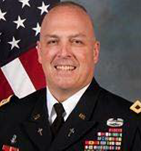
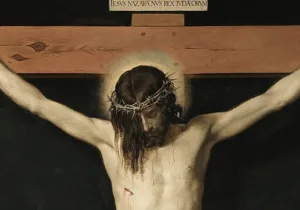
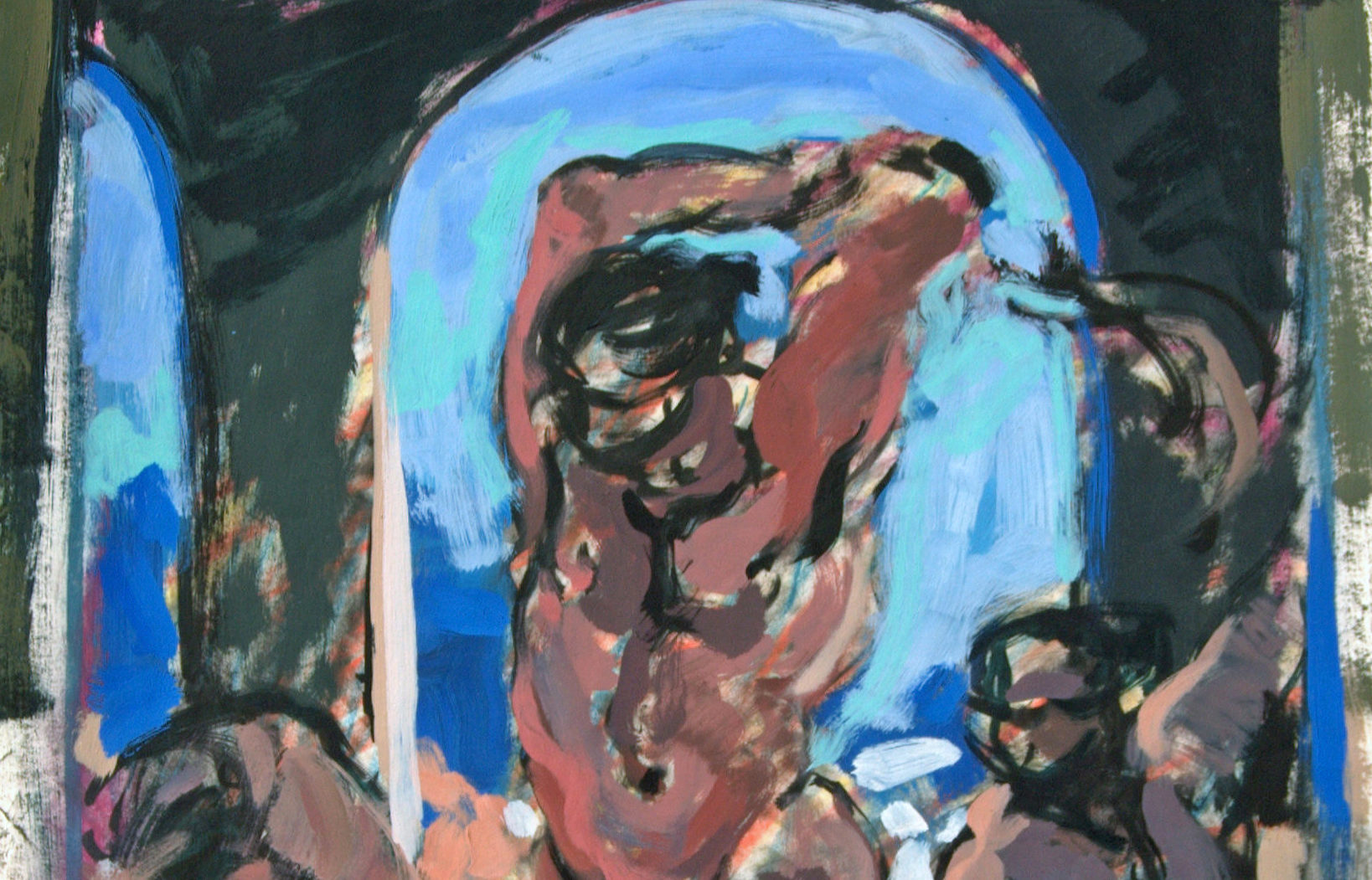
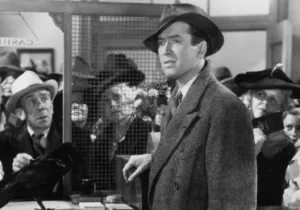

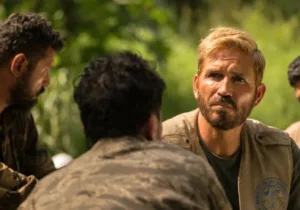

 Sponsor a student for Christianity & National Security 2024
Sponsor a student for Christianity & National Security 2024